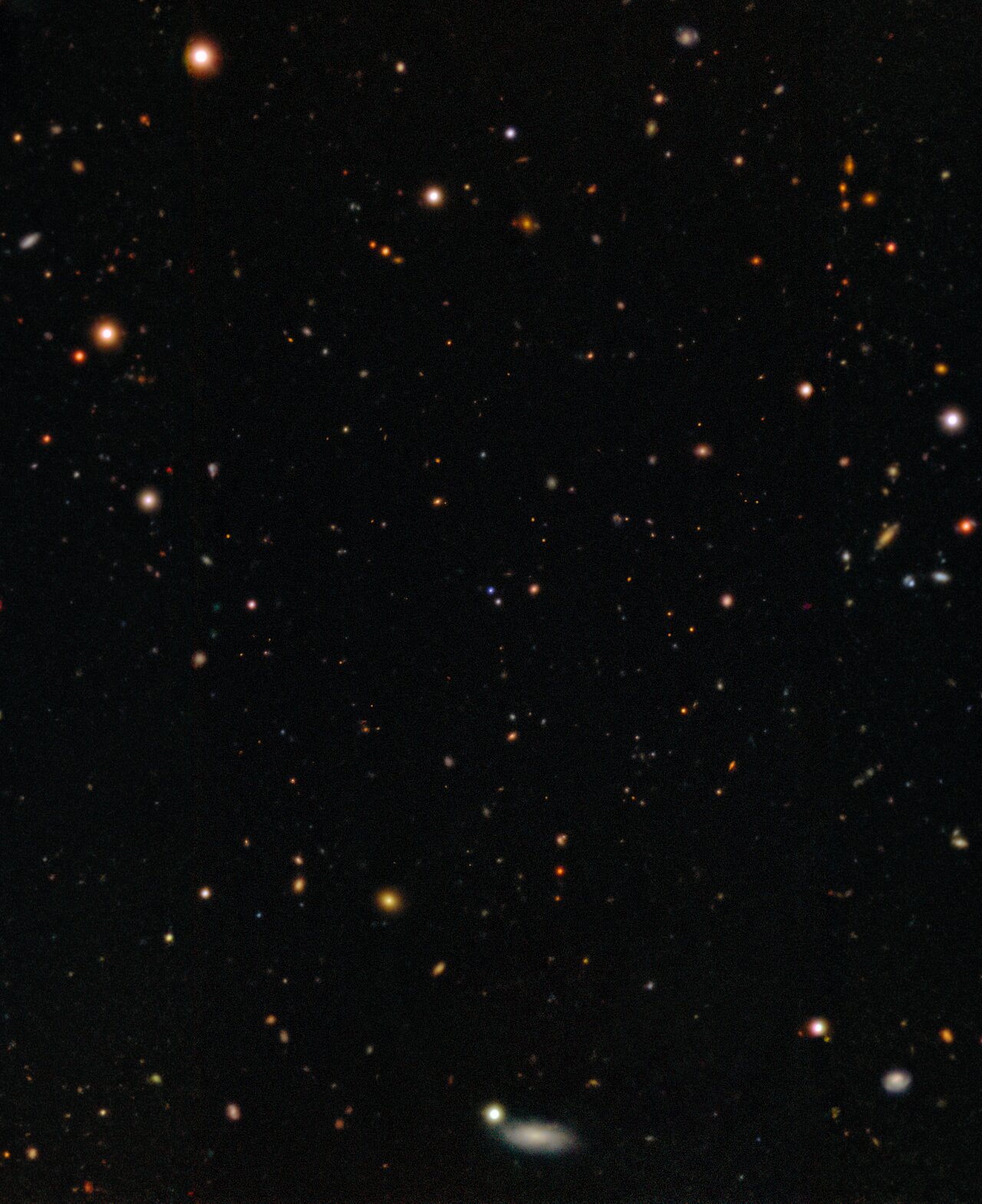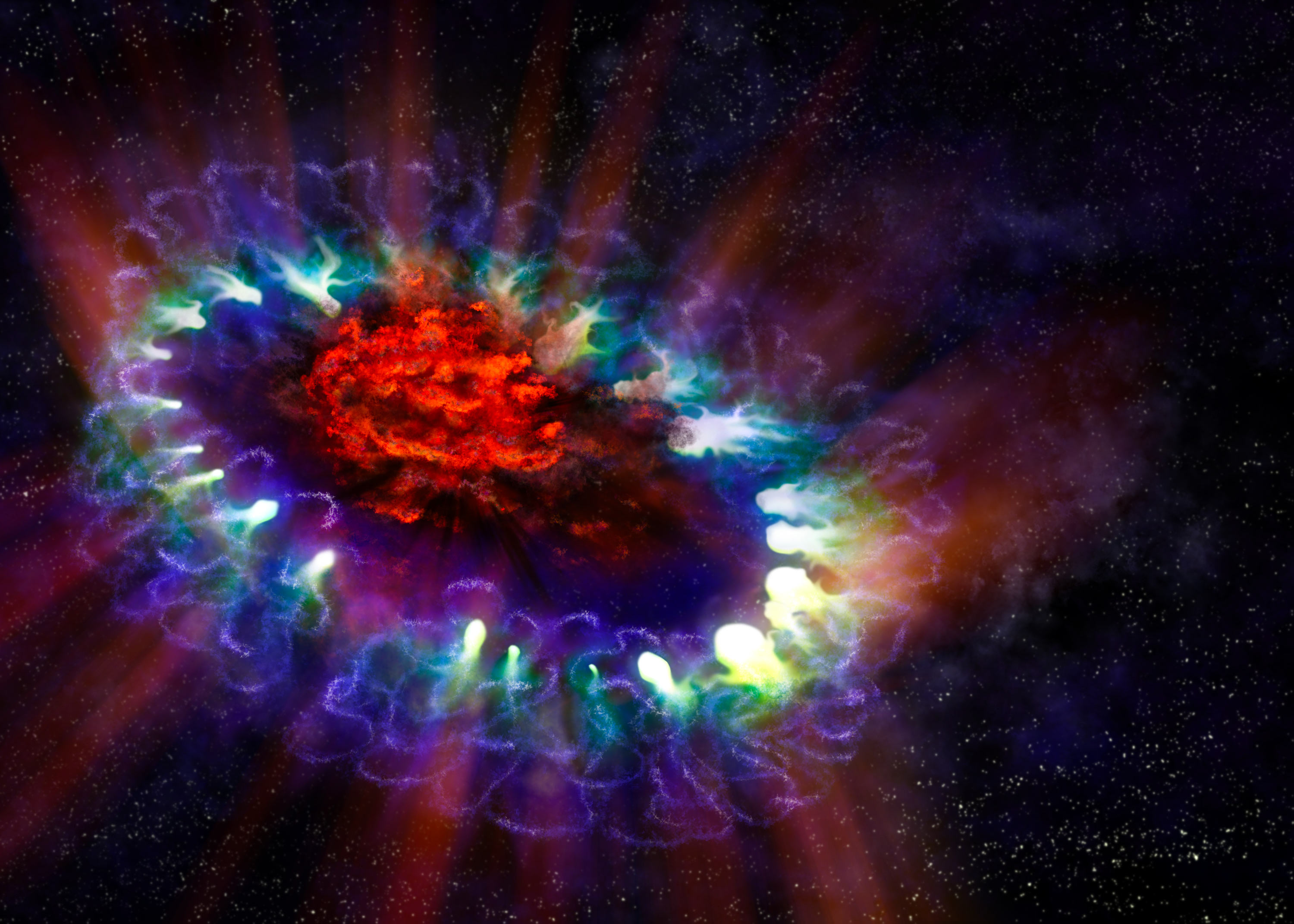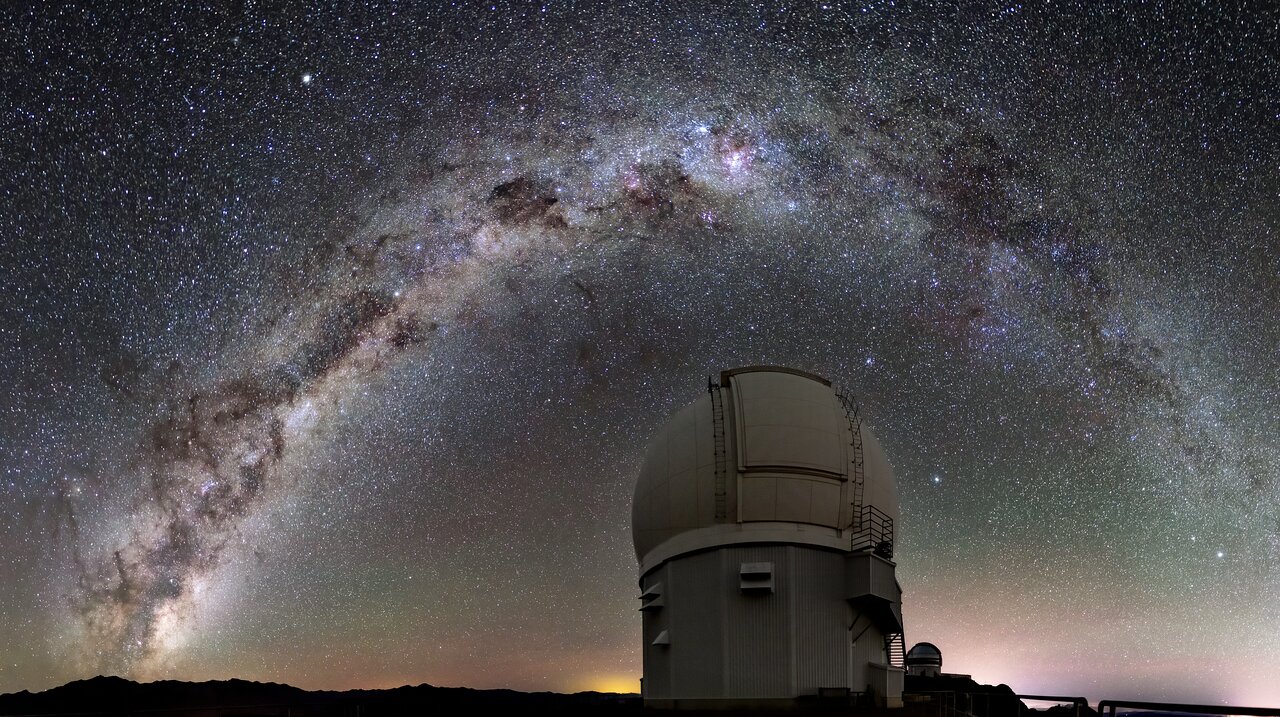Astronomers have discovered a mysterious and powerful blast of X-rays that are the cosmic equivalent of John McClane from the “Die Hard” franchise: a massive star that even a supernova explosion couldn’t kill.
This new research also indicates that the so-called fast X-ray transient (FXT) blast is a “failed” burst of even higher energy radiation, a gamma-ray burst (GRB).
The discovery could revolutionize our understanding of how stars much larger than the sun explode and leave behind exotic stellar remnants like black holes and neutron stars.
“This discovery heralds a broader understanding of the diversity in massive stars’ deaths and a need for deeper investigations into the whole landscape of stellar evolution,” team member and University of Leicester researcher Rob Eyles-Ferris said in a statement.
Tough star throws quite a party… but no gamma-rays
FXTs have long been a puzzle to astronomers. Occurring in galaxies located billions of light-years away and lasting anywhere from seconds to hours, these bursts of X-rays have proved elusive.
Scientists had hoped that the Einstein Probe, launched in January 2024 with the mission of studying X-ray transients, would shine a light on FXTs. A year after its launch in January 2025, the Einstein Probe discovered what was the closest FXT ever seen, known as EP 250108a, which emanated from a galaxy located 2.8 billion years away.
The relative proximity of this FXT provided astronomers with a unique opportunity to study the evolution of one of these X-ray blasts. Following up on its initial detection, astronomers investigated EP 250108a with an array of telescopes, including the Gemini North and South telescopes.
Tracing EP 250108a back to its origin, the team of astronomers discovered its link to the wreckage of a massive star destroyed in a supernova explosion, the optical signal of which is designated SN 2025kg.

Observing the evolution of EP 250108a over 6 days, the team noticed it resembled a “failed GRB.”
GRBs are considered to be the most powerful explosions in the known universe, and they have been known to precede supernovas.
GRBs are thought to be launched from massive dying stars in the early stages of a supernova as its outer layers are ripped apart with escaping jets of high-energy particles. Belting through the cosmos at near light-speed, these particles emit gamma-rays that allow them to be detected.

EP 250108a resembles just such a jet-driven explosion, but the lack of gamma-rays implies that the material failed to erupt through the progenitor star’s outer layers.
These sealed jets interacted with the star’s outer layers, losing energy and emitting X-rays that were spotted by the Einstein Probe.
“This FXT supernova is nearly a twin of past supernovae that followed GRBs,” Eyles-Ferris said. “Our observations of the early stages of EP 250108a’s evolution show that the explosions of massive stars can produce both phenomena.”
‘Welcome to the party, pal!’ SOAR investigates FXT supernova too
To fully understand this strange FXT and the mechanisms that launched it, the team had to go further than the early stage of X-ray observations. As they observed EP 250108a after the initial 6 days, the X-ray emission faded, and the explosion began to be dominated by lower-energy optical light.
“The X-ray data alone cannot tell us what phenomena created the FXT,” team member and Northwestern University researcher Jillian Rastinejad said. “Our optical monitoring campaign of EP 250108a was key to identifying the aftermath of the FXT and assembling the clues to its origin.”
The rise in the optical brightness of EP 250108a lasted a few weeks, demonstrating characteristics that indicated its progenitor supernova was a specific type of cosmic explosion called a Type Ic broad-lined supernova.

Type Ic supernovas are a distinct type of core collapse supernova, explosions that happen when massive stars run out of nuclear fuel and can no longer support themselves against their own gravity.
They differ from other core-collapse supernovas because they are thought to originate from stars that have lost their hydrogen and helium outer envelopes.
The team used the Southern Astrophysical Research (SOAR) Telescope at the Cerro Tololo Inter-American Observatory (CTIO) in Chile to further investigate EP 250108a. This led them to determine that the star that launched this FXT had a mass between 15 and 30 times that of the sun.
“Our analysis shows definitively that FXTs can originate from the explosive death of a massive star,” Rastinejad added. “It also supports a causal link between GRB-supernovas and FXT-supernovas, in which GRBs are produced by successful jets and FXTs are produced by trapped or weak jets.”
Since its launch, the Einstein Probe has detected several FXTs per month, while GRBs are only detected roughly once a year. This indicates that “failed jets” may be more common than “successful ones.”
Scientists hope that deeper mysteries surrounding stellar evolution like this could be solved when the Vera C. Rubin Observatory begins its decade-long survey, the Legacy Survey of Space and Time (LSST)
The team’s research is presented in two papers, which together provide the most detailed data about an FXT and its associated supernova.




